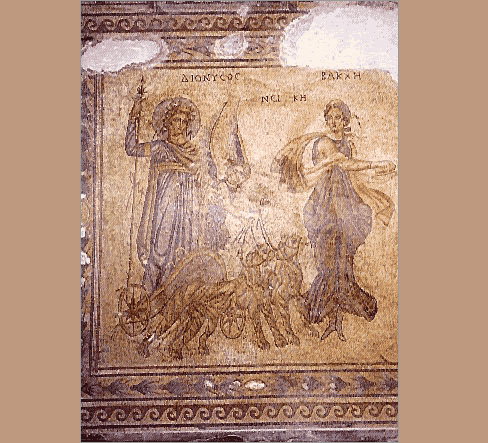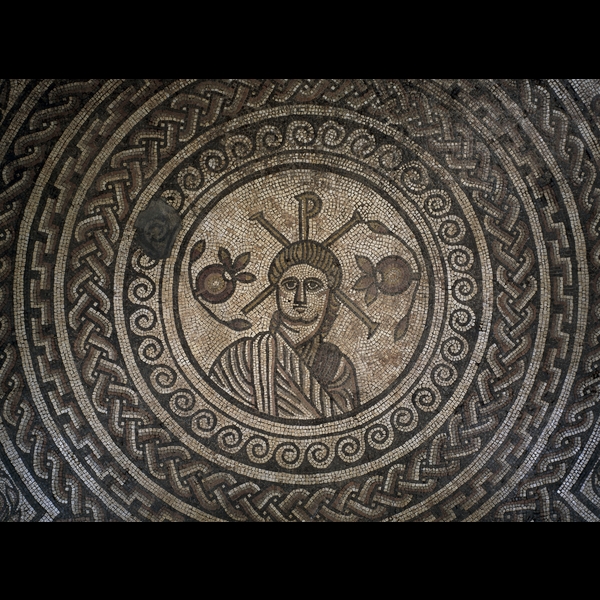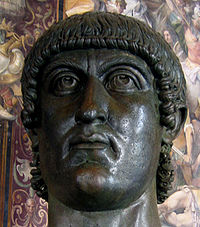
 |
Freethought & Rationalism ArchiveThe archives are read only. |
|
|
#1 | ||
|
Contributor
Join Date: Mar 2003
Location: London UK
Posts: 16,024
|
http://www.britishmuseum.org/explore...ry_mosaic.aspx
This was referenced on the beeb today. Quote:
Quote:
|
||
|
|
|
|
#2 | |
|
Contributor
Join Date: Mar 2003
Location: London UK
Posts: 16,024
|
http://www.bbc.co.uk/programmes/b00shkn4
This might not be available outside UK. . Quote:
There would seem to be a gap that needs explaining. Syncreticism makes a lot more sense. And this particular cuckoo did throw everything else out of the nest. |
|
|
|
|
|
#3 |
|
Veteran Member
Join Date: Jul 2008
Location: Location: eastern North America
Posts: 1,468
|
Thank you Clive, great link. I appreciate your time in digging this up...
Here's another link to some other Roman mosaics, from about one century earlier: http://www.pbs.org/wgbh/nova/zeugma/...7.html#fea_top What I noticed in this earlier mosaic is the presence, in the Moses like figure depicted as Dionysus, of a halo, perhaps meant to indicate divinity. I suppose the point is, it looks as though there may have been some artistic inclination to portray famous figures of legend in mosaics, throughout the Roman empire.... I am uncertain that one can conclude, as seems to have been done by the British Museum, that this mosaic in England, from the fourth century, represents the earliest presentation of the figure of the mythical Jesus of Capernaum. I think it is also noteworthy, that EVEN IN Turkey, i.e. not faraway Britain, the Romans did NOT depict any Christian symbols, figurines, etc, on their murals or mosaics. The only physical evidence, ostensibly representing Christian habitation and practices, dates from mid third century Dura Europos, a little bit further down the Euphrates river from Zeugma, evidence which I believe to be suspect. Is it not peculiar, that NO objects, purportedly conveying Christian content, have been found at Zeugma, notwithstanding the intense, contemporary archaeological excavations there? With reference to the two letters, chi and rho, in the mosaic: I had misinterpreted the chi, as another head decoration, just as Dionysus wore the halo....Is it not unusual to have the Rho displayed with such prominence, if it constitutes the second letter of Jesus' name in Koine Greek? Thanks for a stimulating thread, Clive. avi |
|
|
|
|
#4 | |
|
Contributor
Join Date: Mar 2006
Location: Falls Creek, Oz.
Posts: 11,192
|
 Quote:
Do the curators issue special "Christian glasses" for tourists? Has anyone ventured a date for this mosaic? |
|
|
|
|
|
#5 | |
|
Contributor
Join Date: Mar 2006
Location: Falls Creek, Oz.
Posts: 11,192
|
Quote:
 The British Museum may have been inspired by the Yale Divinity College's acquision of the Dura-Europos "House Church". Alternatively, since it was openly displaying a mithraeum perhaps it needed a "christian Relic" to balance the picture. Why about this third century relic of Sarapis?  Surely someone's made a mistake? This must be the marble head of christ! We have just not put the right set of "Christian Glasses" on yet. I know! The sculptor was a Christian in disguise! He did a scupture of Christ but called it Sarapis. It was merely a security precaution. |
|
|
|
|
|
#6 |
|
Veteran Member
Join Date: May 2007
Location: Arizona
Posts: 1,808
|
This detail of the mosaic from the web site
 looks suspiciously like Constantine. 
|
|
|
|
|
#7 | |
|
Contributor
Join Date: Mar 2006
Location: Falls Creek, Oz.
Posts: 11,192
|
Bull neck.
Apparently a number of Constantne's immediate followers after his death may have venerated him as a God and worshipped him at the porphry drummed statue which he erected in the "City of Bullneck". This was mentioned in John Clavin's book Toto indirectly mentioned here. The Project Gutenberg EBook of A Treatise on Relics by John Calvin Quote:
 Constantine's Column [Left]: Provided to gain perspective on the very uneven battle between the successful military supremacist Constantine and the ascetic priest and logician, Arius of Alexandria, is the Column of Constantine (shown left).It could have been easily seen from the Sea of Marmara and the Bosphorus, and was completed at the dedication of "The City of Constantine", 11 May 330. It was constructed of nine drums of porphyry each 2.9 m in diameter, topped by a Corinth Capital. Its total height was more than thirty-six meters. The column was crowned with colossal bronze statue of Constantine, depicted wearing a crown of seven rays. (It may have been Pheidas' sculpture of Apollo Paropius from the Acropolis of Athens, recycled with bullneck's head. Some accounts describe Constantine holding a spear in the left hand, and a globe in the right hand. Data from The Emperor Constantine, by Hans A. Pohlsander. |
|
|
|
|
|
#8 |
|
Contributor
Join Date: Mar 2004
Location: Dallas, TX
Posts: 11,525
|
|
|
|
|
|
#9 |
|
Veteran Member
Join Date: Jul 2008
Location: Location: eastern North America
Posts: 1,468
|
Brilliant, both of you.
So, does anyone have an idea about Chi and Rho? Could Chi represent instead some other headgear? The four limbs are not exactly uniform--could they designate some sort of military insignia? Could Rho designate some kind of accolade for a military leader? Is there any link to York--Eboracum in ancient times? Constantine was proclaimed Caesar there, upon death of his father.... Or, is it simply a matter of the Greek word christos corresponding to the notion of "annointed one", not GOD, and not unique to jesus of Capernaum? avi |
|
|
|
|
#10 |
|
Contributor
Join Date: Mar 2004
Location: Dallas, TX
Posts: 11,525
|
It is the Labarum - Constantine's sign of conquest. From the wiki:
This image is Constantine, not Jesus. |
|
|
| Thread Tools | Search this Thread |
|